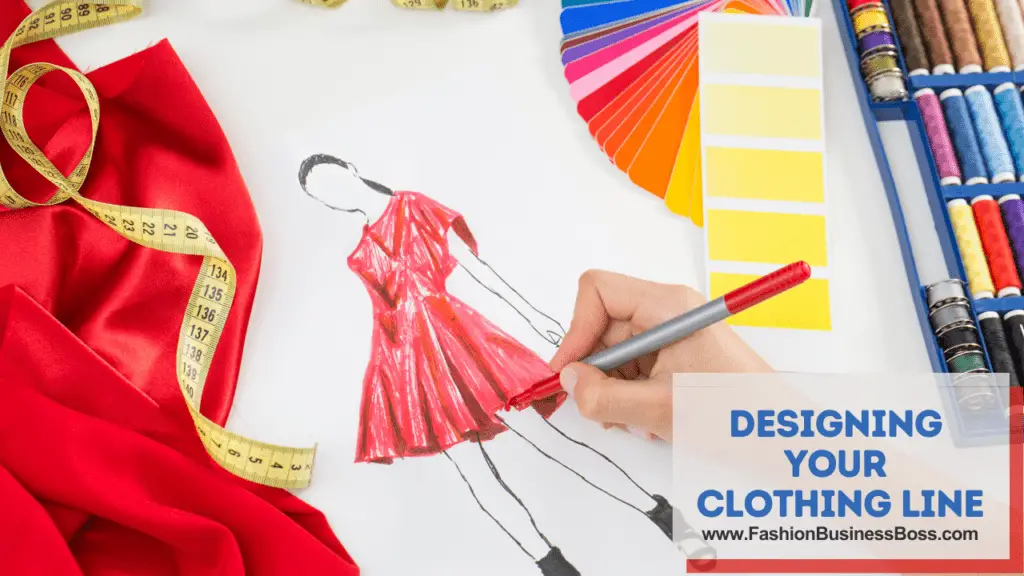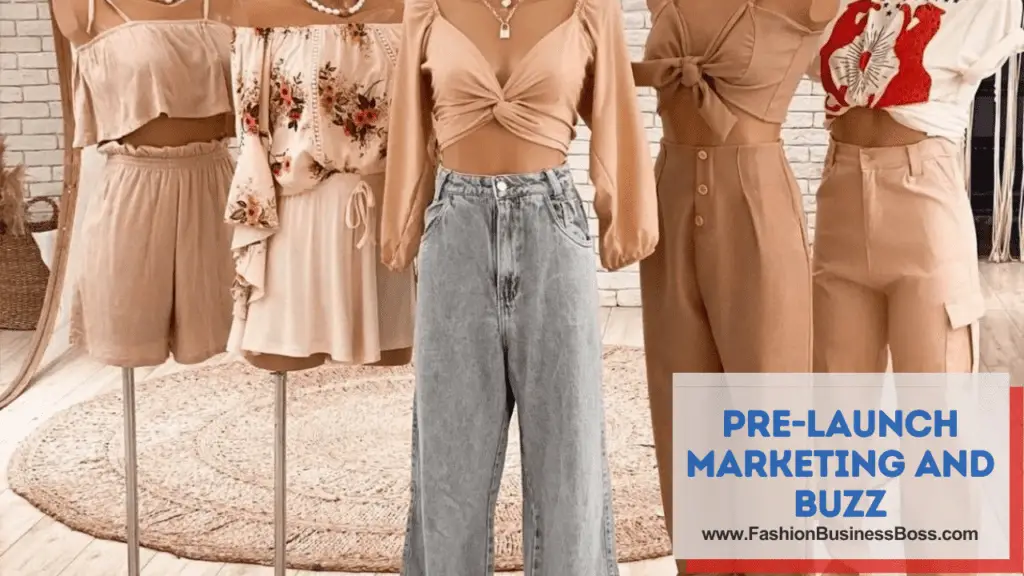Starting a clothing brand is an exciting venture that allows you to unleash your creativity, passion, and entrepreneurial spirit. From designing unique pieces to establishing a brand identity and connecting with your target audience, building a successful clothing brand requires careful planning and execution.
Creating your own clothing brand requires finding a unique niche, conducting thorough market research, designing with passion, and building a strong online presence. Stay authentic, connect emotionally, and deliver excellent customer service for lasting success.
I. Finding Your Niche
Identifying your niche is the foundational step in creating a successful clothing brand. It involves a deep understanding of your brand’s unique identity and positioning within the market. Your niche sets you apart from competitors and establishes a clear direction for your brand’s development.
To begin, self-reflection is crucial. Ask yourself what truly sets your brand apart from others. Is it your design aesthetic, which showcases a distinct artistic flair or innovative approach? Or perhaps, your target audience, which could be a specific demographic or a niche market with underserved needs. Additionally, consider incorporating sustainable practices as part of your niche, appealing to the growing eco-conscious consumer base.
Defining your Unique Selling Proposition (USP) is pivotal to your brand’s success. Your USP is the core element that captures the essence of your brand’s uniqueness. It should communicate a compelling reason why customers should choose your brand over others. This could be a combination of factors like superior quality, ethical manufacturing, or a strong commitment to social responsibility.
By carving out your niche and clearly defining your USP, you gain a competitive edge in the cutthroat fashion industry. Your niche becomes the compass that guides your design choices, marketing strategies, and business decisions, leading to brand loyalty and resonance with your target audience. Embrace your uniqueness, and your clothing brand will thrive amidst the diverse landscape of fashion.
II. Market Research
Thorough market research is an essential aspect of establishing a successful clothing brand. It involves a systematic and in-depth analysis of the market, target audience, and prevailing trends. By delving into market research, you gain invaluable insights that directly impact your brand’s strategy and overall success.
Surveys play a pivotal role in understanding your target audience. By directly engaging potential customers, you can gauge their preferences, needs, and pain points. This valuable information helps you tailor your clothing line to meet their specific demands, ensuring a higher chance of resonating with them.
Analyzing competitors provides a clear view of the competitive landscape. It allows you to identify gaps in the market and find opportunities for differentiation. By understanding what other brands offer, you can position your clothing line uniquely and emphasize your USP.
Studying consumer behavior is equally crucial. Observing how potential customers interact with fashion trends and make purchase decisions enables you to align your designs and marketing strategies with their preferences. This consumer-centric approach ensures that your brand remains relevant and appealing to your target market.
The knowledge gained from market research serves as a guiding light for your design choices and branding decisions. It helps you curate a collection that aligns with the current demands of the market while staying true to your brand identity. This targeted approach minimizes risks and maximizes the chances of success for your clothing brand.
III. Designing Your Clothing Line

Once you have a well-defined niche and a deep understanding of your target audience, the next step in creating your clothing brand is to embark on the design journey. Designing your clothing line is the heart and soul of your brand, where creativity takes center stage. Whether you possess the design skills or collaborate with seasoned fashion designers, it’s vital to ensure that your designs align seamlessly with your brand’s identity and cater to the preferences revealed through market research.
Quality is the cornerstone of any successful clothing brand. Emphasize on sourcing high-quality materials and craftsmanship to ensure your garments not only look appealing but also withstand the test of time. By investing in quality, you establish trust with your customers, fostering loyalty and positive word-of-mouth.
Aesthetics play a significant role in attracting your target audience. Craft designs that speak to their sensibilities and preferences. Strive for uniqueness and originality, making your clothing line stand out in the competitive market. Be bold in expressing your brand’s personality through distinctive patterns, colors, and silhouettes.
Versatility is a key factor that appeals to a broad audience. Create pieces that can be easily styled for different occasions and suit various body types. Providing versatility in your clothing line increases its value and encourages repeat purchases from satisfied customers.
As you embark on the design process, remember to stay true to your brand’s ethos and identity. Consistency in your designs reinforces brand recognition and builds a strong brand image. Balancing creativity and market demands ensures that your clothing line captivates your target audience while meeting their practical needs.
Read more about Designing Apparel for the Digital Shopper: Tips and Tricks
IV. Sourcing Materials and Manufacturers
Selecting the right materials and manufacturing partners is a pivotal aspect in the triumph of your clothing brand. In today’s socially and environmentally conscious world, consumers are increasingly drawn to brands that prioritize sustainability and ethical practices. Hence, opting for sustainable and ethically sourced materials is not just a trend but a necessity to attract and retain conscious consumers.
Sustainable materials include organic cotton, recycled fabrics, and renewable fibers that have a lower environmental impact. By using such materials, your clothing brand can reduce its carbon footprint and contribute positively to the planet.
Equally important is vetting potential manufacturers with utmost care. Conduct thorough research on their expertise, track record, and production capacity. Evaluate their compliance with ethical labor practices to ensure fair wages and safe working conditions for the employees. Engaging with manufacturers who adhere to stringent ethical standards reflects positively on your brand and fosters goodwill among consumers.
Building a robust and dependable supply chain is fundamental to maintaining consistent quality in your products. A strong supply chain ensures timely delivery of materials and smooth manufacturing processes. It minimizes delays, stockouts, and other potential hiccups that may affect your brand’s reputation and customer satisfaction.
Investing in sustainable materials and ethical manufacturing practices may require initial effort and financial commitment. However, this responsible approach is not only ethically commendable but also aligns with consumer values, leading to increased brand loyalty and advocacy.
V. Brand Identity and Storytelling
Crafting a compelling brand identity is a multifaceted process that goes beyond superficial elements like logos and color schemes. It entails creating a captivating brand story that deeply resonates with your target audience. Your brand story is the narrative that reflects the essence of your clothing brand, touching upon its values, mission, and the inspiration behind your designs.
Authenticity is the cornerstone of a powerful brand identity. Consumers today seek genuine connections with brands that align with their beliefs and aspirations. By staying true to your brand’s values and expressing them transparently, you establish credibility and trust with your audience.
Emotional connections are at the heart of building brand loyalty. Your brand story should evoke emotions and connect with your customers on a personal level. Sharing the journey of your brand, the challenges you’ve overcome, and the impact you aim to make creates a sense of community and kinship with your audience.
Effectively communicating your brand’s story through various channels, including social media, your website, and marketing campaigns, reinforces its significance in the minds of consumers. Consistency in messaging and visual representation reinforces your brand identity, making it easily recognizable and memorable.
A compelling brand identity is a magnet that attracts like-minded individuals who resonate with your values and aesthetic. This emotional bond fosters brand loyalty, translating into repeat purchases, positive word-of-mouth, and brand advocacy.
VI. Building an Online Presence
In the fast-paced digital age, establishing a robust online presence is no longer an option but a necessity, especially for clothing brands. A well-designed and user-friendly website is the cornerstone of your online presence. It serves as a virtual storefront, showcasing your clothing line, brand story, and values to potential customers worldwide. Ensure that your website is visually appealing, easy to navigate, and optimized for mobile devices to enhance the user experience.
Professional product photography is a powerful tool to captivate your audience. High-quality images that showcase your designs from multiple angles and in various settings help potential customers visualize the garments and make informed purchasing decisions. Investing in professional photography elevates the overall perception of your brand and instills confidence in your products’ quality.
Social media has become a dominant force in modern marketing. Embrace popular platforms like Instagram, Facebook, and Twitter to engage with your audience directly. Share compelling content, behind-the-scenes glimpses, and user-generated content to create an authentic connection with your followers. Interactive polls, stories, and live streams are effective tools to involve your audience actively.
Targeted marketing campaigns on social media can reach a specific demographic or audience segment that aligns with your brand’s target market. Utilize data-driven insights to tailor your advertisements, maximizing their impact and generating higher conversion rates.
VII. Pre-Launch Marketing and Buzz

Pre-launch marketing is a strategic approach to build anticipation and generate excitement before officially launching your clothing brand. It is a crucial phase that lays the foundation for a successful entry into the market. By strategically engaging your audience and leveraging various marketing tactics, you can create a buzz that captures the attention and interest of potential customers.
Sneak peeks of your designs can be shared through teasers on social media, your website, or email newsletters. Offering glimpses of your unique and captivating creations sparks curiosity and entices your audience, leaving them eager to see the full collection.
Exclusive promotions and limited-time offers add a sense of urgency and exclusivity to your pre-launch strategy. This tactic encourages potential customers to act quickly, driving early sales and attracting brand enthusiasts who appreciate being part of an exclusive club.
Collaborating with influencers and brand ambassadors amplifies your brand’s reach and credibility. Influencers can showcase your designs, share their excitement about your brand, and create engaging content that resonates with their followers. This collaboration leverages their existing audience to increase brand visibility and foster trust among potential customers.
The pre-launch marketing period is an opportunity to introduce your brand’s story, values, and unique selling proposition (USP). Captivating storytelling that connects with your audience on an emotional level helps build a personal connection, paving the way for long-term brand loyalty.
Read more about From Home to Runway: Launching Your Boutique Clothing Business
VIII. Launching Your Clothing Brand
The grand launch of your clothing brand is a momentous occasion that marks the culmination of hard work, dedication, and creativity. To ensure a successful launch, meticulous preparation is essential. Firstly, verify that your website is fully functional, visually appealing, and optimized for a seamless user experience. Your e-commerce platform should be user-friendly, making it easy for customers to browse and make purchases.
Inventory management is crucial during the launch phase. Monitor stock levels diligently to prevent stockouts and customer disappointment. Strive to strike a balance between meeting demand and maintaining exclusivity to sustain interest in your brand.
Hosting a launch event or online live stream is an excellent way to engage with your audience directly. This celebratory occasion allows you to share the story behind your brand, introduce key team members, and personally thank your customers for their support. Such interactions foster a sense of community, making your audience feel valued and connected to your brand.
Promote the launch across various channels, including social media, email newsletters, and influencer partnerships, to maximize visibility. Consider offering special launch promotions or limited-edition items to incentivize early purchases.
Throughout the launch period, be responsive to customer inquiries and feedback. Promptly address any issues or concerns to ensure a positive experience for your customers. Building a reputation for exceptional customer service from the outset can lead to long-term customer loyalty and advocacy.
IX. Providing Excellent Customer Service
Exceptional customer service is a fundamental pillar that underpins the success of any business, and it holds particular significance for clothing brands. As you build and grow your brand, prioritize providing outstanding customer service to create a positive and lasting impression on your customers.
Prompt and professional responses to customer inquiries are paramount. Responding in a timely manner demonstrates that you value and prioritize their concerns. Addressing inquiries with professionalism and empathy fosters a sense of trust and reliability, encouraging customers to feel comfortable engaging with your brand.
An efficient and hassle-free return and exchange policy is crucial in the fashion industry. Clothing purchases are deeply influenced by personal preferences and fit, making returns and exchanges relatively common. By offering a seamless process, you instill confidence in your customers, knowing they can trust your brand to accommodate their needs.
Happy customers can transform into powerful brand advocates. Satisfied individuals are more likely to share positive experiences with friends, family, and social networks, effectively becoming brand ambassadors. Word-of-mouth recommendations from trusted sources hold immense influence and can significantly contribute to the growth of your clothing brand.
Remember that exceptional customer service is an ongoing commitment. Continuously seek feedback and insights from customers to identify areas for improvement and assess satisfaction levels. Address any issues promptly and proactively, turning potential negatives into opportunities for positive brand experiences.
Conclusion
Creating your own clothing brand is a thrilling journey that requires a harmonious blend of creativity, business acumen, and customer-centricity. By carefully crafting your brand identity, understanding your target audience, and providing high-quality products and service, your clothing brand can thrive in the competitive fashion industry. Embrace challenges, stay true to your vision, and always adapt to changing market trends to build a successful and enduring clothing brand.
Frequently Asked Questions

1. Should I consider sustainable practices in my clothing brand?
Embracing sustainability aligns with consumer values and can attract eco-conscious customers, contributing to your brand’s success.
2. How can I protect my clothing brand’s intellectual property?
Consider trademarking your brand name and logo to protect your unique identity and prevent potential infringement issues.
3. What strategies can I use to stay competitive in the fashion industry?
Stay updated on industry trends, be adaptable to changing market demands, and focus on innovation to set yourself apart.
To learn more about starting your own clothing business, check out my startup documents here.
Please note that the contents of this blog are for informational and entertainment purposes only and should not be construed as legal advice. Any action taken based on the information provided in this blog is solely at your own risk. Additionally, all images used in this blog are generated under the CC0 license of Creative Commons, which means they are free to use for any purpose without attribution.

Meet Shawn Chun: Entrepreneur and Fashion Business Fan.
I’m a happy individual who happens to be an entrepreneur. I have owned several types of businesses in my life from a coffee shop to an import and export business to an online review business plus a few more and now I create online resources for those interested in starting new ventures. It’s demanding work but I love it. I do it for those passionate about their business and their goals. That’s why when I meet a designer or boutique owner at a craft fair, farmers market, retail location or anywhere else I see myself. I know how hard the struggle is to retain clients, find good employees and keep the business growing all while trying to stay competitive.
That’s why I created Fashion Business Boss: I want to help fashion business owners like you build a thriving business that brings you endless joy and supports your ideal lifestyle.

